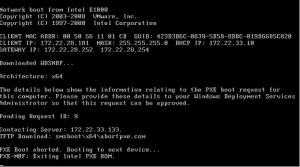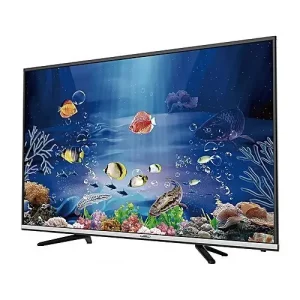How To Fix the No Bootable Devices Found Error



How To Fix the No Bootable Devices Found Error
Encountering the “No Bootable Devices Found” error can be a distressing experience for any computer user. It often appears as a black screen with a simple message that suggests your computer cannot find a device from which to boot the operating system. While this error can be worrisome, it’s not the end of the road for your computer. In this comprehensive guide, we will delve deeply into the causes of this error and provide you with step-by-step solutions to get your system up and running smoothly once again.
Understanding the No Bootable Devices Found Error
Before we embark on the journey of troubleshooting and resolving this issue, let’s gain a better understanding of what the “No Bootable Devices Found” error signifies. Essentially, this error occurs when your computer’s BIOS (Basic Input/Output System) fails to locate a bootable device, such as a hard drive or solid-state drive (SSD), to load the operating system. This can transpire due to various factors, including hardware glitches, misconfigured BIOS settings, or corrupt boot files.
Common Causes of the Error
To effectively address the “No Bootable Devices Found” error, it is imperative to pinpoint the underlying cause. Here are some common reasons why you might encounter this error:
1. Faulty Hard Drive or SSD
A malfunctioning or disconnected hard drive or SSD is one of the primary culprits behind this error. Before delving into more complex solutions, it’s crucial to ensure that your storage device is properly connected and functioning correctly.
2. Incorrect Boot Order
Your computer may be attempting to boot from the wrong device. Adjusting the boot order in the BIOS can often resolve this issue, allowing your computer to identify the correct boot device.
3. Corrupted Boot Files
If essential boot files are corrupted, your computer will be unable to initiate the boot process. Repairing or replacing these corrupted files is frequently necessary to resolve the error.
4. Boot Device Not Recognized
In some cases, the BIOS may fail to recognize your boot device. To rectify this, you may need to update or reset the BIOS settings.
Step-by-Step Solutions
Now that we have a comprehensive understanding of the potential causes, let’s explore the step-by-step solutions to resolve the “No Bootable Devices Found” error:
1. Check Your Hardware
Begin by inspecting your hardware. Ensure that your hard drive or SSD is correctly connected to your motherboard. If you suspect a hardware issue, it is advisable to consult a professional technician for a thorough diagnosis.
2. Adjust Boot Order
Access your computer’s BIOS settings by pressing the appropriate key during startup (usually Del, F2, or F12). Navigate to the Boot or Boot Priority section and set the correct boot device (typically your hard drive or SSD) as the first boot option.
3. Repair Boot Files
If the error is due to corrupted boot files, you can attempt to repair them using the Windows Installation Media. Boot your computer from the installation media and select the ‘Repair your computer’ option. Follow the on-screen instructions to initiate the repair process for the boot files.
4. Reset BIOS Settings
If the BIOS settings are contributing to the error, you can reset them to their default values. Within the BIOS menu, look for an option to reset settings to default or load optimized defaults.
5. Reinstall the Operating System
As a last resort, if none of the above solutions prove effective, you may need to consider reinstalling the operating system. Keep in mind that this approach will erase all existing data on your system, so it’s crucial to back up your data beforehand.
Tips to Prevent Future Errors
While resolving the “No Bootable Devices Found” error is paramount, it’s equally crucial to adopt preventive measures to avoid encountering such issues in the future. Here are some valuable tips:
1. Regularly Back Up Your Data
Frequent data backups ensure that you won’t lose essential files if you need to reinstall the operating system or replace hardware.
2. Keep Your System Updated
Regularly updating your system, including firmware updates such as BIOS updates, can resolve compatibility issues that lead to boot errors.
3. Handle Your Hardware with Care
Physical damage to your hard drive or SSD can result in boot errors. Handle your computer with caution, and ensure it is placed on a stable surface.
4. Utilize Reliable Antivirus Software
Malware and viruses can corrupt system files, potentially leading to boot errors. Employing reputable antivirus software helps protect your system from such threats.
Conclusion
The “No Bootable Devices Found” error can be a source of frustration and anxiety, but armed with the knowledge and solutions provided in this comprehensive guide, you are well-equipped to troubleshoot and resolve the issue. Remember to start with basic hardware checks, adjust BIOS settings, repair boot files, and consider reinstalling the operating system as a last resort. Additionally, implementing our prevention tips will help safeguard your computer against future errors and maintain its overall health.
For more in-depth answers to your tech-related questions and a wealth of themes designed to provide comprehensive solutions, continue exploring our website. We are committed to empowering users with the knowledge they need to tackle various technology challenges head-on.








